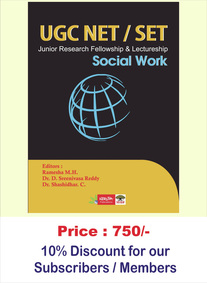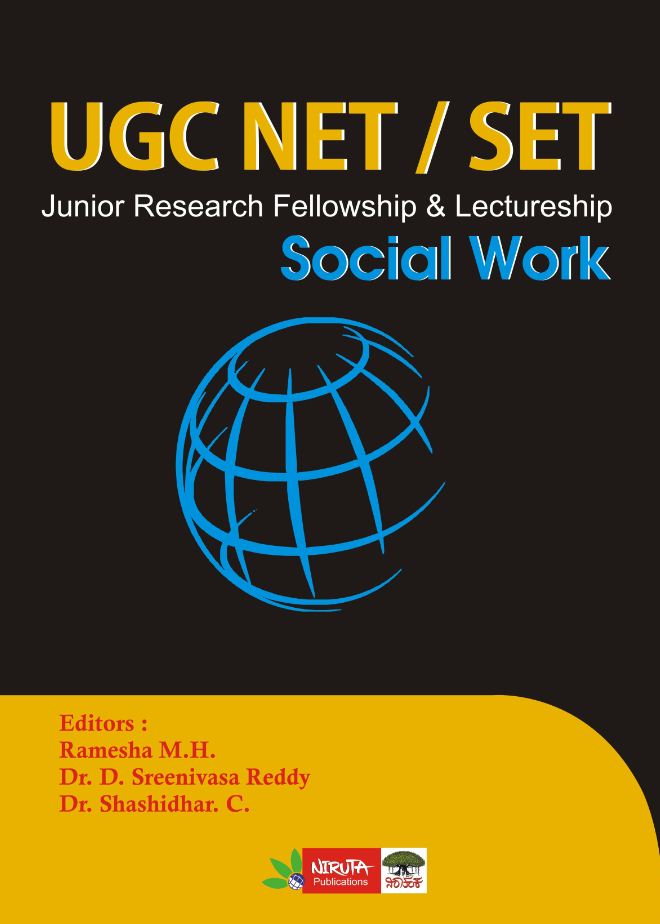|
‘Community’ is a locus social system of a particular kind compost of interacting social institution which meets the basic human needs through the function of which the people have developed a sense of belongingness and potential ability to act together as an entity. In this state, the characteristics of the community are:
What is community organization? Community organization is a primary method of Social Work, which address the community problem as a whole. It considers total society as a unit and applies skills, techniques and approaches of Social work to make the society self sustain. Community organization is the process of people coming together to address issues that matter to them. Community members developing plans for how the city can be a place where all its children do well. Neighbors joining in protests to stop drugs and violence in their community. Members of faith communities working together to build affordable housing. These are all examples of community organization efforts. Murray G. Ross (1967) defines community organization as a “process by which a community identifies its needs or objectives, gives priority to them, develops the confidence and will to work at them, finds resources (internal and external) to deal with them, and in doing so, extends and develops co-cooperative and collaborative attitudes and practices in the community”. Importance of Community Organization:
Objectives of Community Organization: ‘Arthur Dunham’ given following objectives:
Principles of Community Organization: Following are the principles of community organization: 1. Acceptance of community: The community organizer should accept the community and should act in a way that the community should accept him and if he has some problem, he should study that and contact the local leaders in this regards and then approach the community to the interest for the welfare of people in the community. 2. Understanding of felt needs and resources: The community worker should know the felt needs of the people and their resources and they should start work according to those felt needs. They should also explore available resources, which are available outside the community. 3. Individualization: Community worker should always try to identify problems faced by some individuals and group and should repair special plans and programmes for them to make them participate with other groups or individual of the community. By this we mean that individual’s attention is also necessary for the community workers. 4. Self-determination: Community worker should provide full freedom to the local community to determine their needs and problems and resources act their own and should also give plans for their solution. He should encourage them in the planning for solution of these problems and should not impose his own views on them. 5. Freedom within limits: The social worker should guide the community and make them free in giving the ideas of all about the solution of the problems but in decisions should not close the limits to violate the interest of the group but the decision should be in the common interest of the community. 6. Empathy, not sympathy: Community worker’s attitude as also his approach towards work with the community should be non-judgemental. Whenever any decision is to be taken, it should be based on objective facts concerning community life and values cherished by the community, not by the worker. 7. Flexibility: The community worker should involve various members of the community in different matters and also delicate authority to them. The community workers should also be flexible to give rise to new leadership according to change situation. 8. Progress programme experience: All the programmes in the community should be evolutionary and not revolutionary. All the programmes chalked out by the community and should take in to consideration the local needs and problems with the involvement of people in the community. 9. People’s participation: The community worker should involve in the identification of all issues, problems, needs and resources and also development plans for this area. This participation should be from the first stage till final decision is taken. 10. Good or meaningful relationship: The community worker should establish good relationship in the community. He should need all the groups and sub-groups of the community and should understand their problems. This would enable him to involve the community as long as he feels. They had developed capacity to lead as he deals at with their own felt needs and problems. 11. Mobilization: The community organizer should mobilize its all resources whether internal or external to avoid duplication of efforts. He should utilize these resources. He should also explore the talents and ability of different groups in the community. It is very necessary for the development of community. 12. Evaluation: The community worker should evaluate his work and people participation. He should also find out the various drawbacks and the groups between the various programmes of the community development. The purpose of the evaluation is to readjust you according to the change situation. Key points to Remember:
Gandhian Approach to Community Organization:
Values and Ethics of Community Organization: Different social work thinkers and practioners have described social work values with different names and have put them under different categories. In this regard quite often Kohs, Herbet Bisno, Konopka, Friedlander, Goldsmith, Hoselitz, Hock, Frank, Green, Hobbes, Inkeles, Royce and Deutsch are being quoted. (i). First of all we may take up the worth, dignity, integrity, self-respect, equal opportunity and potentiality of members of the community. In community work these should be given due place and honor. (ii) Next to this we may take up liberty and tolerance. Community should be given full liberty in decision making and in that process coming differences should be tolerated. (iii) Constructive cooperation and coordination are essential for community work and these should be observed not only among individuals of the community but between all members, all agencies and other influencing bodies and persons related with the community. (iv) Due place should be given to human stresses, motivations and learning in community work. (v) Approach to community work should be democratic; welfare oriented and need based, (vi) Community organization believes in individuals and social change and evolution along with their rigidity towards cultural demands, (vii) Each person, group or community is somewhat dependant on other and interdependence is essential for life and progress. (viii) Individual is an indirect component of the society and its needs are specific and common both. Individual and society both have certain responsibility for each other. A community worker has to keep in mind these facts and provide adequate opportunities for their progress anddevelopment. (ix) Community organization practice believes in confidentiality, social justice and modernization. Ethics of community organization:
Steps of Community Organization: I. Identify the Problem: Identify the problem is the first step of Community Organization. In this process, Community organizer is analyzing the particular community deeper by conducting the detail study. In this process, organizer can list out set the problems which are raised by the people also analyze the problem for its magnitude, symptoms and causes as well as effects. II. List the problems: All the identified needs and problems of the community are listed by the community with the help of the community organizer. This is a process which makes the people to understand their own situation. Realization of the needs and problems will bring awareness about their own situation. The involvement of the community in identifying the various needs and problems will increase the participation of the people. The problems in different settings are likely to differ and hence accordingly the identified problems are listed. III. Give priorities – all the needs and problems cannot be considered together for further action. Therefore all the needs and problems are analyzed for its severity, magnitude, symptoms and causes based on which they are ordered and priority is given to all the needs and problems. The community after having identified the needs and problems analysis them and give priority by which they have to be taken up for further actions. IV. Select a problem – from the priority list most urgent problem which needs to be taken up immediately is selected. All the problems cannot be approached simultaneously there fore there is need for selecting any one problem and initiate further action. Based on the order of priority the first in the list is taken up for working out solutions. V. Redefine the problem – the selected problem is redefined for better understanding by the community. For better planning the problem has to be analysed and defined before taking any further step in addressing the problem. Many times one may look at a phenomenon as a problem by its appearance or at the peripheral level instead it has to be further analysed is it a real problem. Does it affect the normal functioning of the community? How many people are being affected? How are they affected? If nothing is does towards this how it will disturb the community? These are all some of the questions by which we can easily analyse and understand to redefine the problem. VI. Formulate achievable objective – the redefined problem is converted into achievable objectives which will be considered for further action. At times the objectives have to be split into many parts so that they could be converted in to programmes and activities towards fulfilling the needs and problem. Let us assume that illiteracy is a problem in a community. It is further analysed that majority of the people of the locality have not gone to school at their childhood days. One of the reasons for that was that there was no school in their locality. At present a school has been constructed and teachers are appointed. Now non availability of the school is not the reason for illiteracy. It is further analysed and found that the children are not sent to the school. Though there were many children at the school going age the parents do not send them to the school because the teachers are not regular on one hand and on the other when the teachers are present they do not teach the children. In this situation the general problem externally appears to be illiteracy but its root cause is the defective function of the school. VII.Work out the alternatives – based on the objectives the different ways and means are found out by the community through brain storming. One should not be content with a problem with one solution because it will limit the practice of community organization. In order to solve the selected problem the community has to generate maximum number of alternatives to address the problem. Let us take the problem of illiteracy as stated in the previous stage. How do we solve the problem? The problem is directly related to the defective functioning of the school. What are the different ways to solve this? The concerned teachers can be met and advised. The defective functioning can be brought to the notice of the higher authorities. The higher authorities can be met by the representatives with a written representation. Motivate more children to join the school. With draw all the children from the school. Close the school. Organize a protest march. Organize a hunger strike. There could be many such alternatives could be generated in tacking any problem. VIII.Select an appropriate alternative – among the proposed alternatives one of the best alternatives is selected for tackling the selected problem. To solve a problem there could be many ways but there may be one best and suitable way or method by which the problem could be easily solved. Such options should be selected. While selecting an alternative one has to start with softer approach and in a sequence. If the lower level approach fails apply the next one and even that one fails then select the next one and nothing works out finally we may resort to social action methods and may be at times we may have to resort to strong measures. IX. Work out a plan of action – in order to materialize the selected alternative an action plan is proposed in which the responsibilities are assigned and tentative organization is structured. The time frame, resources needed and personnel involved are decided at this stage. Supposing to solve the illiteracy problem of a community it is decided to meet the authorities to present a petition. This has to be discussed at length to decide about the date, time, who, how many, where etc. At the time of meeting the authorities who is to speak? What to speak? How to speak? All these things have to be decided and role played so that it is done in a perfect manner and brings the desired results. X. Mobilization of resources – to implement the plan of action the required resources is assessed, identified and mobilized. The resources may be in terms of time, money, man power and material. An estimate is made and the sources are identified for mobilizing the resources. Many times man power resources alone may help to arrive at a solution. Therefore the community has to have a thorough understanding by which people by themselves may come forward to include themselves for further action. Apart from this any other resources have to be mobilized internally and if it is not possible then we have to think about it from external sources. XI. Implement the plan of action – after having made a plan of action along with the resources the plan is implemented. The implementation takes care of the time and resources towards fulfilling the fixed goals. While implementing the plan of action the involvement of the people and their active participation by accepting the responsibilities has to be ensured. The people have to be prepared and guided to become a partner in the problem solving approach. XII. Evaluate the action – the implemented plan is evaluated to find out the success and deviancy of the action from the objectives. Any deviancy or any undesired results are identified and the reasons for the deviancy are discussed. The positive and desired results are to be appreciated. The evaluation can be made as one of the components of working with the community. It could be organized either at periodical level or at the end of the activity either within the organization by the organization personnel or by an outsider or by an expert. The task is not complete unless the evaluation is completed. XIII.Modification – based on the evaluation the modification needed is decided and introduced. In order to bring a permanent solution to the selected problem it is being addressed with the modifications. These modifications are proposed in order to settle the problem permanently. XIV.Continuation – the modified action plan is implemented and continued. XV. Select the next problem – once the selected need is fulfilled the next problem is selected from the priority list. Subscribers please login to access full text of the article
New 1 Year Subscription to Digital Archives at just Rs.500
0 Comments
Your comment will be posted after it is approved.
Leave a Reply. |
UGC NET Training for
Social Work We are pleased to announce the training programme on “UGC NET Social Work”. The details of which are as under. It covers in detail the UGC NET Social Work syllabus and previous question papers.
Categories
All
|
SITE MAP
SiteTRAININGJOB |
HR SERVICESOTHER SERVICESnIRATHANKA CITIZENS CONNECT |
NIRATHANKAPOSHOUR OTHER WEBSITESSubscribe |
MHR LEARNING ACADEMY
50,000 HR AND SOCIAL WORK PROFESSIONALS ARE CONNECTED THROUGH OUR NIRATHANKA HR GROUPS.
YOU CAN ALSO JOIN AND PARTICIPATE IN OUR GROUP DISCUSSIONS.
YOU CAN ALSO JOIN AND PARTICIPATE IN OUR GROUP DISCUSSIONS.
|
|



 RSS Feed
RSS Feed





